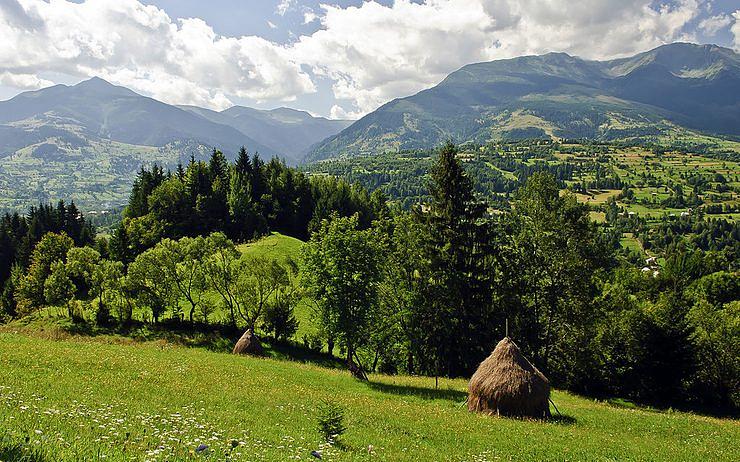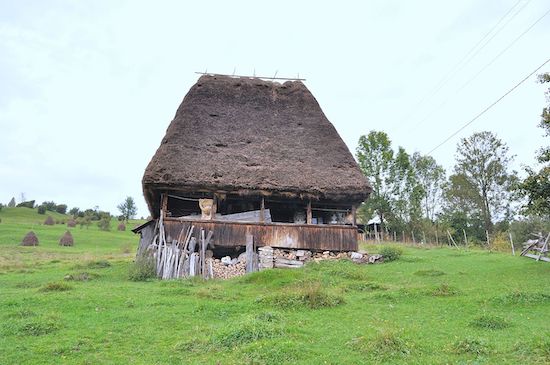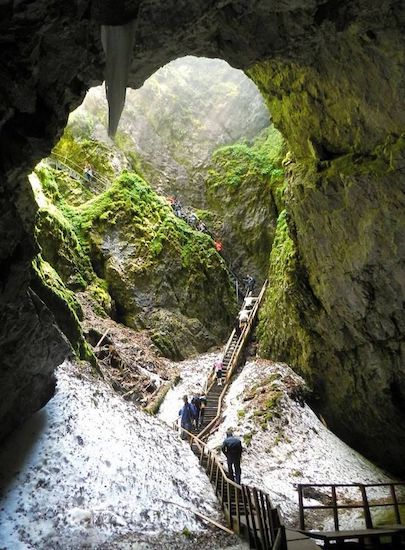Romania travel: Three places to visit in the Apuseni Mountains this summer

“The Stone Land,” that’s how the Motilor Land (Tara Motilor) was nicknamed, which is located in the heart of the Apuseni Mountains in western Romania. With picturesque landscapes and spectacular landform, home to some of the largest caves in the country, this region is also known for its inhabitants, the Moti, real mountaineers, famous for their long tradition of defending their rights and territories, but also for their villages where traditions have remained intact.
The Pătrăhăiţeşti village
Located 5 km from Arieseni and 1,200 m above sea level, Pătrăhăiţeşti is a typical picturesque village in the land of Moti, lost between the mountains. Today it is still inhabited by a dozen families living at the pace of nature and seasons, as their ancestors lived a hundred years ago, in perfect communion with nature. The enchanting landscapes with green meadows and pine-covered mountains, and the peace and hospitality of the locals make it an exceptional place. To reach the village, the bravest can start a short hike from Arieseni, through the forest. Ancestral traditions have remained alive among the villagers, so you can go in search of mesterul Mocanu, master craftsman in woodworking. You can visit his workshop-museum where he will show you how he makes wooden objects specific to the region: barrels, kitchen utensils, cups, but especially the tulnic, a wind instrument that can measure between 1.5 to 3 meters in length, often used by shepherds to gather the sheep or to signal and communicate from the top of a hill.
And to listen to the melancholic sweetness of this instrument, go in search of the village’s last tulnicareasa, Mrs. Domnica, an old lady who knows how to blow in the tulnic, and who will make you hear the sounds of the instrument.
As in most villages of the Apuseni Mountains, you can spend the night with the locals and taste their traditional cuisine, often prepared with fresh products. Do not hesitate to taste their afinata, a delicious blueberry liqueur.

The bears’ cave
You will have to visit this cave, a true masterpiece of nature, spectacular for its many stalactites and stalagmites but also its rock formations whose shapes sometimes make you think of castles, animals or fantastic creatures.
Located 60 km from Arieseni, in the village of Chiscau (Pietroasa commune), this cave has a length of 1.5 km but the part accessible to tourists is only 488 meters. It was 1975 when it was discovered by chance during limestone exploitation works. Traian Curta, one of the village’s miners, was the first one who had the courage to enter and explore the mine, and who got really scared when he discovered the huge bones inside, a real cemetery! Indeed, the name of the cave comes from a species of bear that disappeared 15,000 years ago, the cave bear, Ursus Spelaeus. These gigantic mammals used to retreat to these caves to die. Today we can still see traces and fossils of bears but also other species such as lion, wild goat and cave hyena. Moreover, in one of these galleries, you will find a strange calcareous formation that will make you think of a bear that is desperately trying to escape from the cave. Because, the legend says that a hundred bears that found shelter here perished following a landslide that blocked the entrance to the cave...

The ice cave of Scarisoara
At an altitude of 1,165 meters, the Scarisoara cave is home to the second largest underground glacier in Europe, a 4000-year-old natural monument preserved thanks to the air currents and the low temperature which is sometimes close to 0 degrees even in the summer, perfect for cooling off if you took a jacket with you. The entrance is through an impressive chasm from which you have to go down (then back up) 270 steps to enter the cave. It houses a huge glacier with a volume of 80,000 cubic meters, but also huge stalactites and stalagmites that never thaw. Know that what you have in front of you is unique because, throughout the year, the ice melts and then remakes, which means that the scenery is never the same from year to year. To get there you can start a small hike from Garda de Sus and you will arrive 2 hours later at the cave following the path marked with a red cross.

The original story, in French, is available at Lepetitjournal.com.
newsroom@romania-insider.com
(Opening photo: Wikipedia/Gavrila Stetco)











